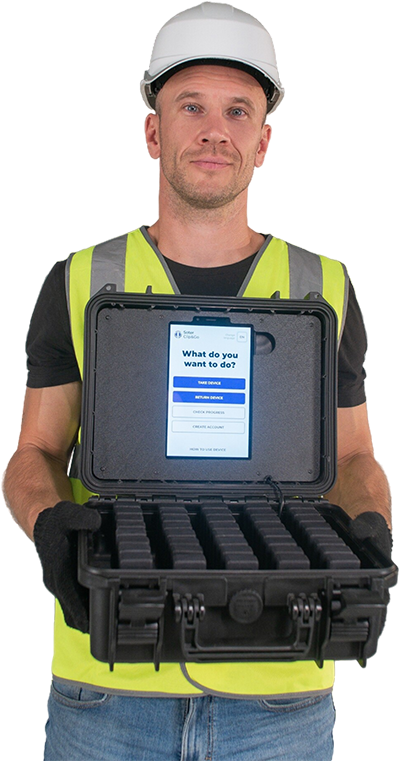3 Biggest Challenges Every Operations Leader Faces (And How to Overcome Them)
Effective supply chain operates like a well-oiled machine. But like all machines, there are people behind it. In the case of logistics – many people. The headache for almost every operations leader is to keep their people productive 24/7, otherwise, the machine will skid.
.jpg)
Effective supply chain operates like a well-oiled machine. But like all machines, there are people behind it. In the case of logistics – many people. The headache for almost every operations leader is to keep their people productive 24/7, otherwise, the machine will skid.
When it comes to declining productivity in the workforce, the main causes are lost workdays and high employee turnover. A way to solve these problems is to use technologies or automation, but then a third problem arises – implementation.
One of the world-leading logistics companies stated in their annual report that in 2019, a hefty 2434 lost workday cases led to 41,733 days off work. That’s around 17 lost workdays per case. It’s impressive! But in a negative way, for sure.
The statistics indicate we know at least 40% of all injuries in the logistics industry are caused by manual handling activities. What if we could declare a reduction of at least 9,000 lost workdays? This also sounds impressive. But in a positive way, this time. Why this number? We’ll lift the curtain on that a bit later. Let’s dive deeper into the problems and find the solution that doesn’t end up becoming a challenge.
Lost Workdays
Despite various regulations, safety training and preventive technologies, workplace injuries are still the main driver of lost workdays. The core lies within the people and their behaviour. It’s difficult for everyone to follow the same process or move safely when being fatigued or stressed and there’s no wallpaper or sign to fix it. But what if we can change the behaviour of workers?
At first look, it sounds extremely time-consuming or even insane, especially if we think of changing the behaviour of full-grown workers with their own cultural background and habits. Reason? Many companies use outdated learning methods. Classroom training has its benefits, but it’s not enough to make significant changes.
At Soter Analytics we approach the problem differently. To set up the new and correct lifting behaviour we supply workers with small wearable devices that notify them of incorrect movements while they work, which makes the learning process engaging. Personalized training is delivered via mobile phones and the programs take about 10 days for full completion. As a result, workers start to move and lift items safely on their own, without extra managerial interventions or time-wasting classes. Thus, the risk of injury decreases together with lost workdays, supporting both short and long term improvements.
High Employee Turnover
Maintaining the required number of workers on-site to meet all goals is a huge challenge. Especially for high-demanding jobs. On average, employee turnover in logistics sits at 10-30%, while to get a trained replacement takes 4 weeks and to make them fully-adapted and effective – up to 3 months. This is time-consuming, puts more pressure on existing workers and can cause a loss in motivation for all parties, possibly resulting in absenteeism or resignation. It will never end!
The art to making employees loyal comes in many forms: salary, colleagues, working environment, safety etc. But it all is called appreciation and respect. When a worker recognizes an employer showing care for their well-being, there’s a lesser chance of them leaving the job.
Soter Analytics solutions help companies invest in better human capital management. Providing quality ergonomics training that is individualized shows a level of care to employees and, especially, care of the most important asset – their health.
Implementing the Tech
Many issues can be fixed by technologies, even the two above, lost workdays and high employee turnover. However, bright innovations face 2 big barriers – cybersecurity networks or extremely complex IT infrastructure and people. As a wise IT specialist once said, the biggest issue of every software sits in front of the monitor. In other words, even when a company finds a solution, it takes too much time to roll it out, which usually leads to the escalation of another problem.
When it comes to people, the fight with fear is required. To prove the benefits of every new technology to stakeholders sometimes seems impossible. They will deny it for 1,000 reasons, especially when the tech invades their private space.
To avoid it, we have made Soter solutions fully independent of corporate IT resources. They do not require a corporate Wi-Fi connection. They do not require Wi-Fi at all. Each device is equipped with a separate LTE-connection module and may work without a mobile phone, providing training materials via a communal laptop. To increase the acceptance of Soter solutions among workers, all data the devices collect is non-personal and GPS-free.
9,000 “Lost” Workdays
Finally, why 9,000 lost workdays? That’s the easiest part! Soter Analytics solutions have proved their effectiveness in the logistics industry by decreasing the number of manual handling injuries, on average, by 55%. Thus, this is the number of days that could be saved using our solutions. So, how many lost workdays can you save?
Originally published at Logistics Management on March, 2021.
About Soter Analytics
Soter Analytics is a global safety science company producing AI-supported wearable solutions that reduce the risk of ergonomic injuries in the workplace. Soter wearables are widely used in logistics, manufacturing, healthcare and other industries, helping leading companies to prevent up to 55% of back & shoulder musculoskeletal injuries.
To see how Soter Analytics can help you improve behaviour, engage employees to self-manage their training and prevent workplace ergonomic injuries, simply Book a FREE DEMO today.


